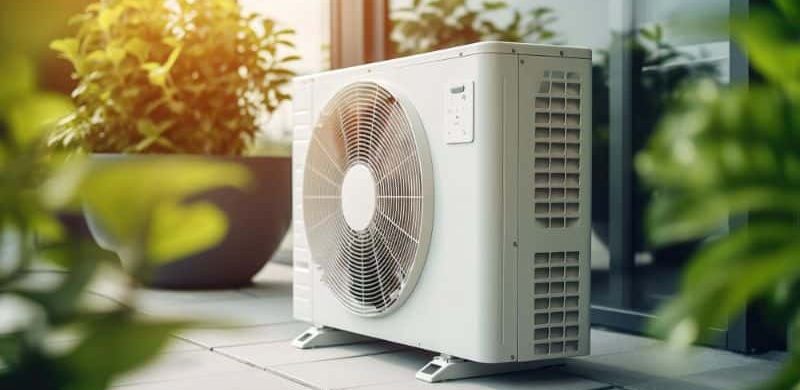


OBTAIN 3 QUOTES FOR YOUR HEAT PUMP OR AIR-CONDITIONING
Mini-split vs. Ducted Heat Pumps
Mini Splits vs. Ducted Heat Pumps - Pros, Cons, & Prices!
Every home in Canada needs a reliable heating and cooling system. All types of heat pumps use an outdoor compressor to gather heat in winter and eliminate it in summer.
If you are looking for the best heat pump for your home, you may find yourself torn between a mini split heat pump and a ducted heat pump. They basically work in the same manner but differ in how they integrate with the home.
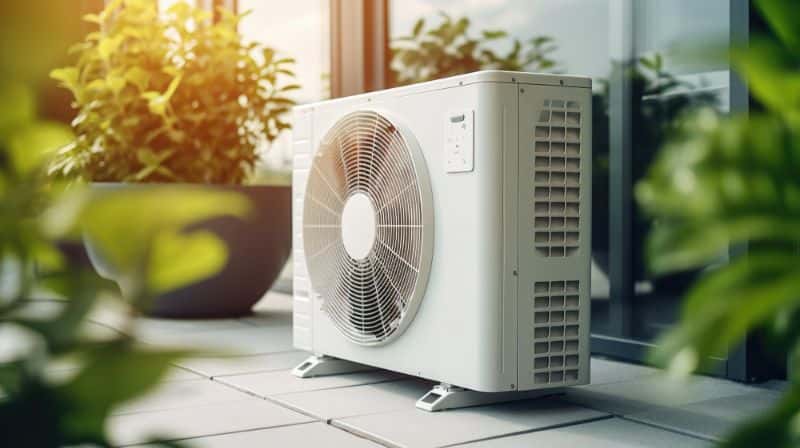
Ducted systems are common across Canada but the ductless mini split heat pump is also fast gaining ground.
You need to know the pros and cons of each type of heat pump and their prices so you can make a well-informed choice.
Read on to see the right heat pump type for your home based on your lifestyle, goals, and budget.
You can also fill out the short online form on this page to connect with reliable heat pump installers in your area, free of charge!
Understanding Ductless Mini Split Systems vs. Ducted Heat Pumps
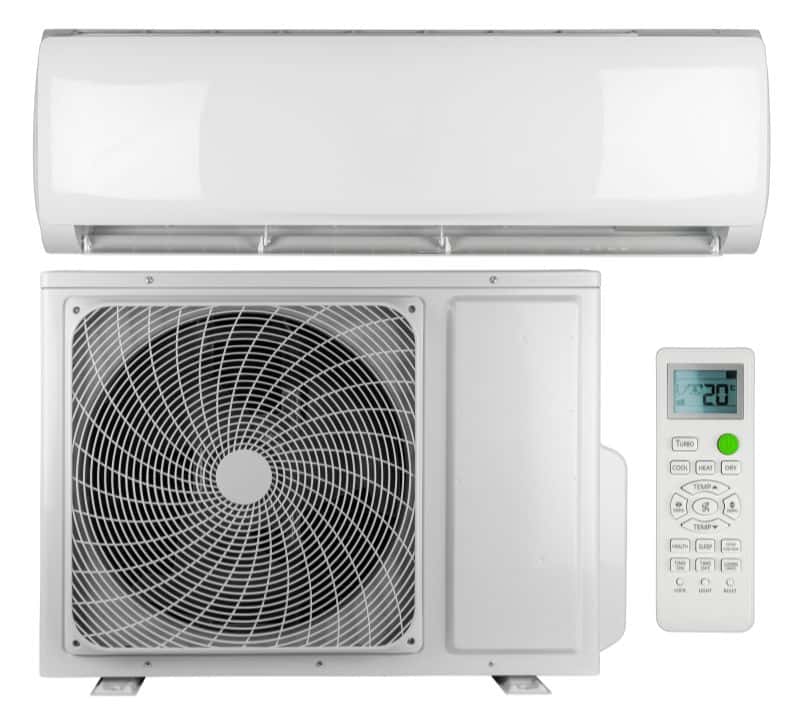
How do you choose between a ducted heat pump and a mini-split heat pump for your home’s heating and cooling needs? It is important to know the pros and cons of each type of system to make the right choice.
The first step, however, is to know how each type functions and understand the unique benefits they offer to see which one is more suitable to your lifestyle.
Introducing the Ductless Mini Split System
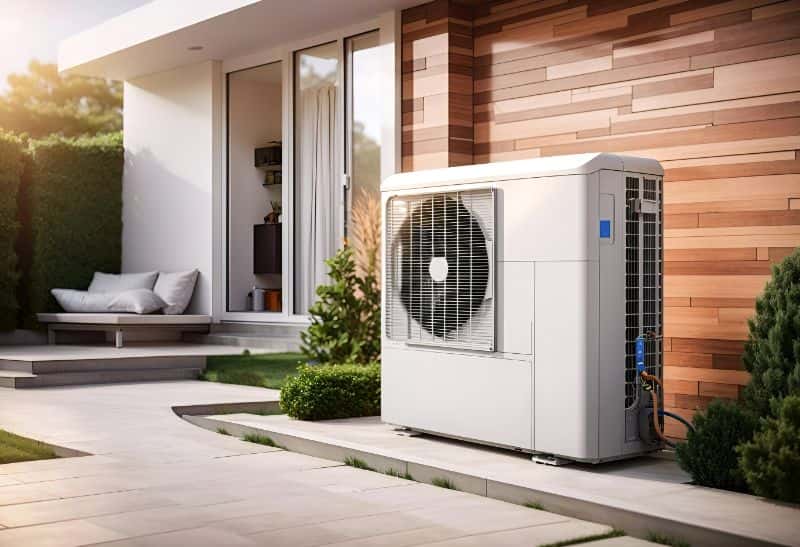
Ductless mini-split systems are similar to forced air systems that have ductwork and move energy in and out of the home for heating or cooling.
You can feel more secure with a ductless system since multiple units provide heating and cooling. If one of them malfunctions, you still have other units to do the work.
This is particularly true for a mini-split system because the indoor unit and the condenser function independently.
Ductless mini-split heat pumps and air conditioners can fit any space, unlike the more traditional systems. They are available in different sizes and shapes and can be installed without installing ducts in the walls.
They are also most suitable for smaller homes that don’t have an air duct system. Individual blower units can be installed in several areas using only one outdoor unit.
The Main Parts of a Mini-split System
It is also important to know the various parts of a mini-split system so you can better understand how it works. Below are the main components:
Indoor Unit
The indoor unit (air-handler) is installed on the wall, below the ceiling. It has a coil, fan, and, at times, filters, and air purifiers.
The indoor unit is connected to the outdoor unit using refrigerant lines and electrical wiring.
Outdoor Unit
The outdoor part consists of the compressor, condenser coil, and fan. It is installed in the exterior of the home or on a roof. The refrigerant is compressed by the compressor which is essential to the heat exchange process.
Refrigerant Cycle
A mini-split system works on a closed-loop refrigerant cycle. The refrigerant is a chemical compound that changes from liquid to gas and vice-versa at different temperatures or pressures.
What does a mini-split heat pump offer?

Mini-split systems offer many advantages to homeowners that are well worth their cost.
Less Noise
Mini-split systems operate at lower decibels than HVAC systems, resulting in less noise in the home.
They are quieter than window air conditioners but they do produce some noise. This can be a major concern for some when the outdoor unit is installed near the bedroom.
Easy to Install
Since a mini-split system can be installed without ductwork, the process is easier and faster. It only needs an indoor and outdoor unit and a connecting conduit.
A small hole must be drilled into a wall so that the conduit can pass through.
Homeowners are happy that a mini-split system can be installed and working in a matter of hours.
Multi-Zoning
Another advantage of a ductless split system is room-by-room zoning which allows you to heat and cool separate areas based on your preferences. You can do this by simply adjusting the thermostat on your indoor unit or units for multi-split systems.
Energy Efficiency
A mini-split system will help you to save on energy bills by heating or cooling only the area you are presently in. This level of energy efficiency is not available in traditional HVAC systems which provide the same temperature in all areas of the home with the ductwork.
A mini-split system with Energy Star certification means cost-efficiency and energy savings with as much as 60% energy savings compared to traditional electric radiators.
Better Air Quality
Because mini-split systems don’t have ductwork, mold, dust, and allergens are avoided. These systems also have filtration systems that remove bacteria, dust, mold, and debris for better air quality in the home.
Conventional HVAC systems require air duct cleaning which could cost $500 or less. You definitely save more with a mini-split heat pump.
The Disadvantages of Mini-Split Heat Pump Systems
A mini-split system, or a ductless heating and cooling system, is known for flexibility and energy efficiency. But that is not to say they are perfect systems as they do have weaknesses.
Aesthetic Issues
Some brands of indoor units have a discreet appearance but some are more conspicuous on walls, thereby affecting the aesthetics of a room.
Homeowners who value aesthetics may find this to be a drawback. There are recessed indoor units that can be installed into ceilings but they cost much more than wall-mounted units. Prices start at around $5,000 for each room.
Less Coverage
A mini-split system heats and cools individual areas or zones. Compared to centralized systems that cover a whole home, a mini-split system covers a smaller area.
If you have to install several indoor units, you might want to consider a traditional HVAC system.
Adaptability to weather conditions
Mini-split systems work in varying temperatures, including extremely hot or cold weather. However, climate conditions and the unique specifications of a system will dictate how it performs. Not all systems work well in certain weather conditions, and you may have to get a backup source for heating or cooling.
There are mini-split systems that are designed to work efficiently even in extremely cold temperatures such as -15°Fahrenheit.
In extremely hot weather, you may also need a supplemental cooling system.
Maintenance
You may spend around $300 to $600 on the maintenance of a mini-split system. This includes each head, the replacement of air filters, and the inspection of the wiring, electrical components, and refrigerant.
Mini-split systems have extended operational hours which makes frequent maintenance necessary. While conventional HVAC systems only need annual maintenance, a mini-split system may need at least twice a year, before summer and winter.
Cost
A mini-split system has higher installation costs than conventional HVAC systems if you need multiple heads.
The average cost to install a mini-split system is about $2,500 to $6,000 for a single area. If you need a multi-zone system, the cost could go as high as $15,000.
The final cost would depend on how many indoor units are needed, the brand you choose, and the heating and cooling capacity.
Energy Star-rated systems have higher prices.
Traditional HVAC systems could cost from $5,000 to $12,000 with installation if you already have ductwork in the home.
Space Allocation
A mini-split system needs space in the wall and ceiling for the indoor units. You cannot install heads near items that affect airflow. The surface must also be stable. Access to the electrical lines and the refrigerant must also be considered for conducting regular maintenance.
There are other options you can consider for heating and cooling your home such as:
- Window air conditioners
- Portable air conditioners
- Furnace
Speak to an HVAC expert in your area to get valuable advice tailored to your needs.
Compare multiple quotes using our short online form, free of charge!
How does a ducted heat pump work?
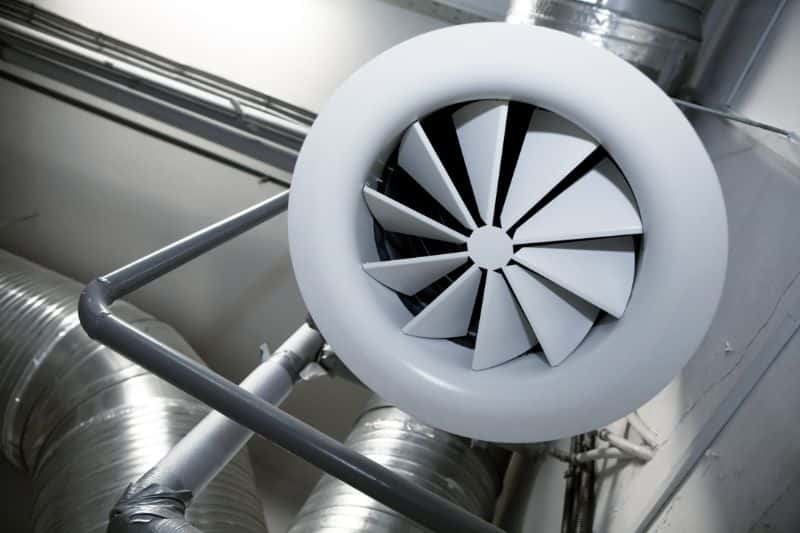
A ducted heat pump is a centralized heating and cooling system that would have an outdoor unit for heating and cooling. Residential and commercial properties can benefit from a ducted heat pump.
The outdoor unit connects to the indoor unit. It has a blower and a heat exchanger. The indoor unit distributes the air in the home through ducts and vents. A refrigerant fluid is circulated by the compressor to supply or remove heat from the indoor air as necessary.
The Pros and Cons of Ducted Heat Pumps
A ducted heat pump can be more energy-efficient compared to typical air-conditioning systems. This is because a heat pump can be used to heat and cool the home. Because they are air-tight systems, they are more efficient than other HVAC systems. Ducted air-source heat pumps are thermostat-controlled, making them convenient and easy to use.
They also evenly distribute temperature in the home, making your living spaces more comfortable. Zoning can be used to control temperatures in different parts of the home based on your needs.
Larger homes and multi-story homes benefit more from ducted heat pumps.
What are the disadvantages of ducted heat pumps?
The first, and perhaps most significant downside to installing a ducted heat pump is the high upfront and maintenance costs.
Heat pumps can give you savings on energy bills but they have higher installation costs. They also need regular maintenance to function efficiently.
Further, the cold climate of Canada means heat pumps have to work double time. When outside temperatures drop below freezing, your heat pump has to work harder to maintain the temperature indoors at a comfortable level. For this reason, many homes in Canada also use electric baseboard heating, furnaces, or boilers.
If you use a furnace for heating the home, it may be a good idea to replace it with a ducted heat pump.
The Cost of a Mini-Split Heat Pump vs. a Ducted Heat Pump
Many experts say that heat pumps are the future of home temperature control. They are environment-friendly and high on energy efficiency.
Typically, a ducted air-source heat pump that can work efficiently in cold Canadian weather would cost anywhere from $15,000 to 20,000 with installation fees.
In contrast, a ductless mini-split heat pump installation could cost you less – from $4,000 up to $15,000 for larger and cold-weather units with multiple zoning.
Several factors will significantly affect the price of a heat pump installation, including the size of the home, the heat pump brand, and the model you select. In addition, your location and government rebates available in your area can also have an impact on the cost.
Breakdown of the costs to install a Heat Pump
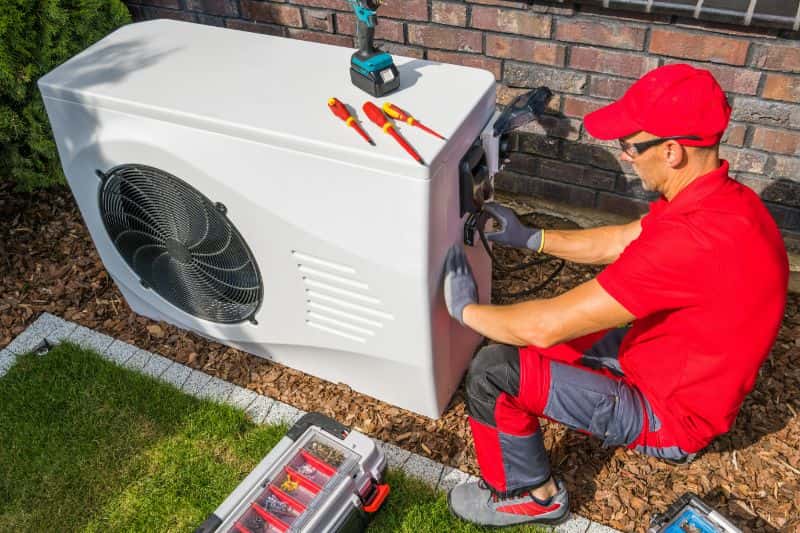
The costs of a heat pump installation will vary based on the type of system you choose. Below are the average costs for your reference.
- Ductless mini-split air conditioner: $6,500 to $12,000
- Ducted air-source heat pump: $14,500 – $18,000
- Ground-source/Geothermal heat pump: $25,000 or more
The size of your home and its existing infrastructure will also have an impact on the cost. Upfront costs may seem very high but remember that a heat pump can provide 1.5 to 3 times more heat than the electrical energy it consumes when in use.
Thus, a modern heat pump will lower your energy bills for heating by as much as 50%. In the long term, you can get significant savings from utility bills.
Average Prices of Heat Pumps based on Size & Type
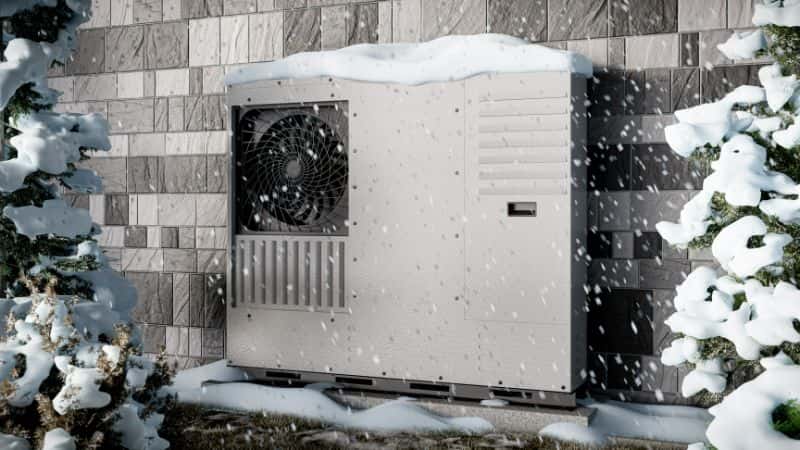
Before you buy a heat pump, you must know the proper size that is suitable to your home. HVAC professionals can check your home and measure the property, the ceiling, number of windows, etc. to estimate the right size of heat pump for your needs.
One of the most important factors in the price of a heat pump is the average temperature in your area. Heat pumps suited to extreme cold weather conditions are more expensive.
|
|
|
1.5 tons |
|
|
|
|
|
|
|
|
|
|
|
|
|
|
|
|
|
|
|
|
Many HVAC contractors will offer heat pumps with different energy efficiency ratings. Know that the higher the rating, the more energy-efficient the system and the more expensive.
A SEER rating of over 14, the standard in the industry, is considered very efficient. You may think that you can reduce your expenses by choosing a less efficient heat pump with lower upfront costs. Keep in mind, however, that you may save on upfront costs but pay considerably more money in the long term.
The cost to replace a heat pump in the home
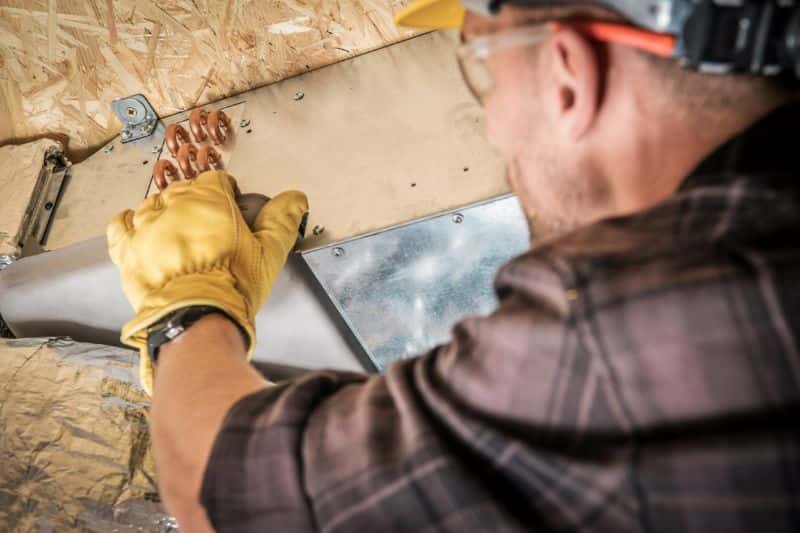
If your heat pump suddenly stops working, it could be for a number of reasons including depleted refrigerant or damage to the compressor.
It is always advisable to check if the system is still under warranty and to contact a qualified HVAC professional for repairs.
If the heat pump has reached the end of its life or is beyond repair, you will need to replace with a brand-new heat pump. The cost is the same, whether you have an old system or not. You may be able to save on installation costs if refrigerant lines are already in place.
A replacement air-source heat pump with installation could cost from $5,000 to $12,000 depending on the type of unit, the BTU output, etc.
The most recent models of popular heat pumps feature more advanced refrigerants and other improvements that allow them to operate effectively in -20 to -30° Celsius. These cold-weather heat pumps are the most expensive on the market and could cost as much as $20,000.
Finding the best HVAC contractor for a heat pump installation
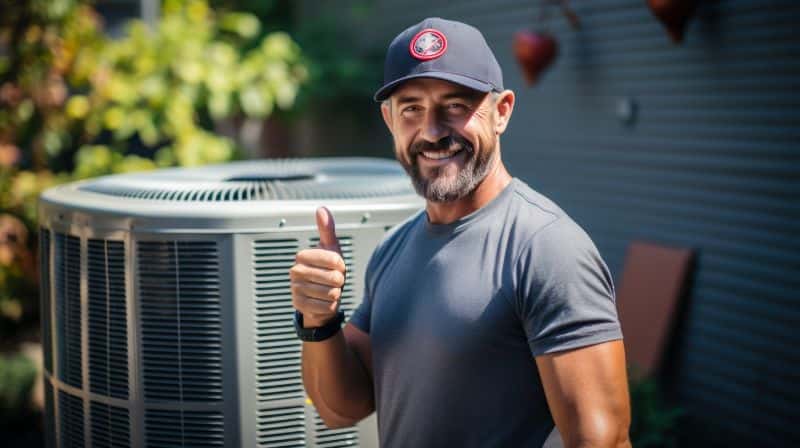
We know that finding the right HVAC contractor to handle your heat pump replacement is very important.
Our HVAC partners have gone through a comprehensive check so we can assure you of their qualifications, insurance, experience, and good customer service.
We want to help you connect with the top heat pump professionals in your area to make sure you get great value for your money. They can offer you valuable advice regarding the best type of heat pump for your home.
Fill out the short online form on this page at no cost to receive competitive quotes from HVAC contractors near you!
Comments are closed.



OBTAIN 3 QUOTES FOR YOUR HEAT PUMP OR AIR-CONDITIONING
Copyright© 2025 Compare Home Quotes.
Oolong Media





